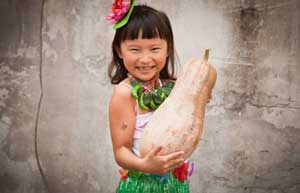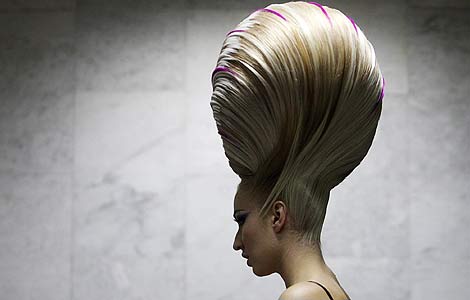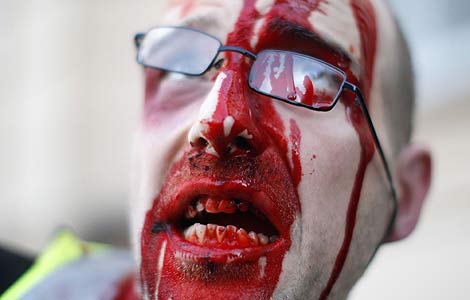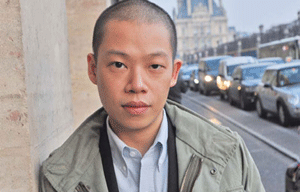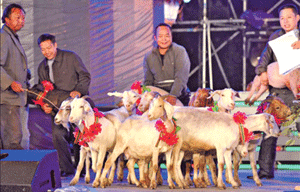Milliner's crossing
Updated: 2011-09-30 11:47
By Alexandra Leyton Espinoza (China Daily European Weekly)
|
|||||||||
Elisabeth Koch left her lucrative PR job to pursue a hat-making career and is one of the very few milliners in Beijing. [Alexandra Leyton Esponiza / For China Daily]
Dutch-American finds her niche in the relatively unknown profession of hat making in China
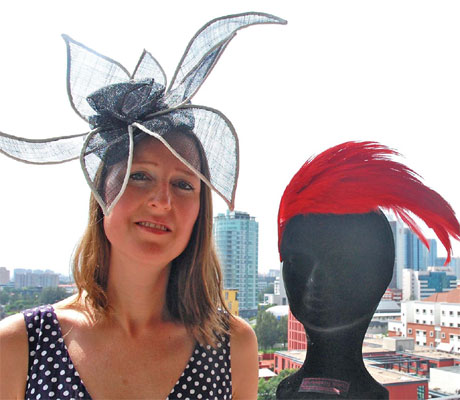
Dutch-American Elisabeth Koch has had a chequered career that took her to different parts of the globe. But it was in China, that she finally got an opportunity to pursue her dream of being a successful milliner.
Success has indeed come by Koch's way as her creations are now not only featured in popular fashion magazines like Harper's Bazaar, Vogue and Cosmopolitan, but also worn by celebrities like movie star Li Bingbing and the princess of The Netherlands. Next on Koch's agenda is to open her own hat shop, or atelier, in Beijing.
"Wearing a hat is often seen as an icebreaker. Not only do you get a lot of compliments, but also attention as you would find more people wanting to talk to you," she says.
But Koch's career path was not always centered on hat making. Rather it was a story of trying on different hats before finding the one that fit.
Armed with a master's degree in communication studies from the University of Amsterdam, Koch started her working career as a journalist covering financial news for Reuters news service.
After journalism Koch moved on to the world of banking with working stints at Dutch bank ABN AMRO and Fortis Investment in Brussels.
But it was not long before she decided that it was time to change tack
"There were many occasions when I felt that I should have studied fashion. Though I had excellent rapport with my colleagues, the financial sector was just not my cup of tea. I always wanted to work with hats."
When her husband was offered a job in China in 2007, the couple decided to move to Beijing, and Koch decided it was the right time to fulfill her dream.
"I was a little bit apprehensive at the thought of leaving a secure job and industry for something unknown. When you have a comfortable lifestyle with a steady pay check and mortgage, it is not uncommon to feel whether it is the right thing to do."
But Koch's fascination and love for hats had a long history. While she was studying for her bachelors degree in London, she also attended a millinery course at the renowned Wombourne School. Koch learnt the traditional hat making techniques, and also how to use hat blocks, sewing tools and steaming equipment.
"It wasn't until I left my banking job, that I realized this was what I wanted to do always, to become a milliner. I always loved to wear hats, often bought vintage hats and by the time I started studying millinery, I had a collection of over hundred pieces," she says.
Koch says that she did not have too many expectations from the millinery profession when she came to Beijing. But the results have been way beyond her expectations, she says.
"My impression about fashion in China was that it was gray and drab. I was so immersed in my hat studies, that I did not have any time for research."
Koch says that her first impressions disbanded her of her notions when she landed in China. "On my way from the airport, I saw lots of youngsters in cool retro outfits. I realized then that this was a place with immense opportunities."
Koch started by setting up her own brand, the Elisabeth Koch Millinery and a website.
Much of the initial work revolved on sourcing raw materials and establishing linkages.
"It's difficult to come to China and start your business pronto. It was also a challenge as I hardly spoke Chinese. I had to constantly remind myself to stick to the plan," she says.
"When I started to search for other milliners to understand the local market scenario better, I was surprised to find that there were hardly any," reminisces Koch.
The real breakthrough came when a motorcycle shaped hat made and worn by Koch for an event in 2008 caught public fancy.
"When I stepped on to the red carpet for the event in this crazy hat, there were so many flashes going on around me. I felt like Michael Jackson, when people started asking me 'who are you'," she says.
Koch says she has not looked back since then. The event was followed by a 10-page spread on hats in fashion magazine Harper's Bazaar.
More fame and several photo shoots followed and soon Koch was roped in as the hat stylist for actress Zhou Xun in the movie Fengsheng (The Message).
"It was then that I realized that I had finally made it. It was an incredible feeling, as I had been making hats for just seven months in Beijing. This is something that I could not have dreamt of elsewhere," Koch says.
What excites Koch most about China is that hat making is still considered a novelty. Her clients seem to be lapping up everything that comes their way even though some hats are meant to be only showpieces.
Koch says that she was recently approached by the Beijing Institute of Fashion and Technology to conduct a hat-making demonstration for their students.
"Of course they also make hats but they are mostly soft hats that are mass produced. When I showed them the wooden moulds and the effort needed for each hat, they were truly impressed."
Koch's hats are made with felt, feather and silk, with most of the raw materials being imported from Holland. Depending on the material and the hours of handmade work, her hats are priced between 1,800 yuan (210 euros) and 4,000 yuan.
Most of the 150-odd hats that she makes are sent to suppliers in Hong Kong, Shanghai, Paris and New York.
"Most of my Chinese clients prefer bulk purchases. Some buy five hats at one time and will come back later for seven more. I had one Chinese client who bought nearly 50 hats," she says.
Sometimes the tastes also vary, says Koch.
"I have had clients wanting me to make hats from plastic noodles with chop sticks sticking out."
While Western customers mostly go for hats that are daring, Chinese customers prefer vintage hats with a veil.
"My Chinese clients love veils and sparkles. The only thing I avoid is green hats and peacock feathers as they are considered unlucky," she says.

